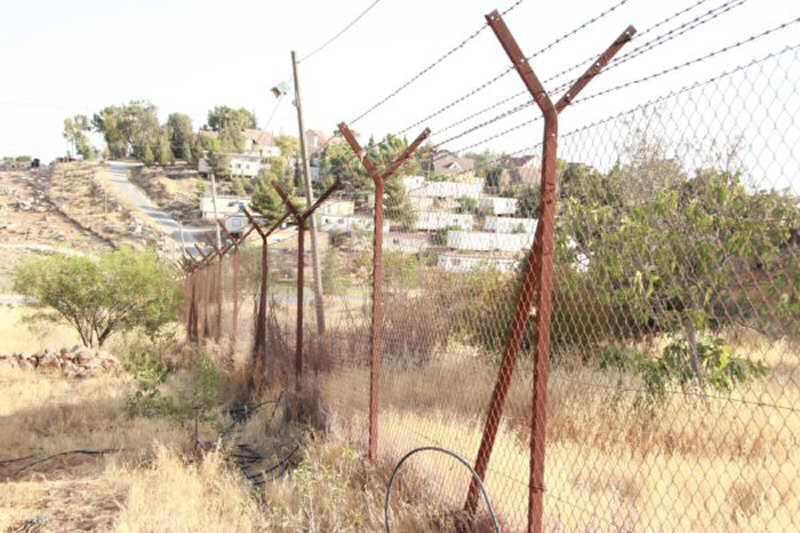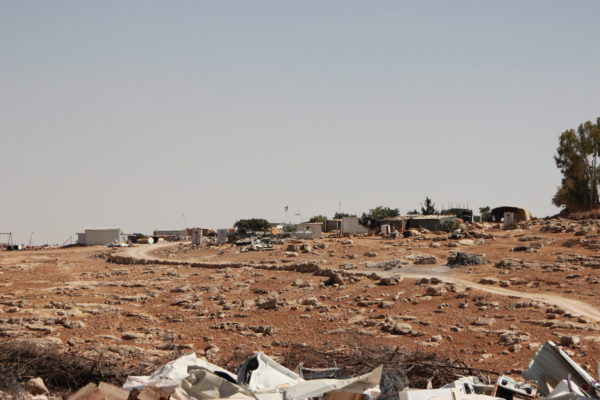The fence separating Umm al-Kheir from the illegal Karmel settlement.
06/29/17 | International Solidarity Movement | al-Khalil team
Our day in Umm al Kheir started with a common flying checkpoint, set up by the Israeli forces in Zif. Our mini-bus driver didn’t want to pass this control so we got out of the car, walked through the control and, then, waited for our friend from the village to pick us up. We had some spare time and observed the soldiers controlling nearly every vehicle trying to pass, and wrote down their plate-numbers. After we got picked up, we tried to enter the village, which is only accessible through one road. This road is directly next to the illegal settlement of Karmel and, therefore, entirely under the control of the Isreali forces. An Israeli police-car was stationed directly at the entrance to the village to stop and control every passing car. So, we made a u-turn to avoid yet another control and contact with the police and, instead, waited until the police had left to enter Umm al Kheir.
Umm al Kheir is located in the South Hebron Hills, in the south east of Yatta. The village is divided in different parts: on one side there is the Bedouin village, Umm al Kheir, and, a bit further, the village itself, with the mosque and around 1,300 inhabitants.
We visited the Bedouin part of Umm al Kheir. This part of the village is located directly next to the settlement: the playground for the children is surrounded by fences which separate the settlement from the village. The main road through the village leads directly into the settlement and is frequently used by settlers. The whole life in this beautiful piece of land is dominated by their settler-neighbours: except for one house in the village, every house has several times been demolished and is constantly threatened by demolition by the Israeli forces. The location, directly next to settlement and in Area C, is reason enough for the Israeli administration to reject building permits and thus ignore the villagers trying to live their every day lives. (The vast majority of building permits in Area C for Palestinians are denied).
Umm al Kheir is not connected to any water or electricity supply system, and the Israeli government refuses those services for the village. Meanwhile, the settlement directly adjacent to the village has electricity 24 hours a day. Umm al Kheir, on the other hand, is dark in the night, just lit by the light shining from the settlement and the chicken-farm on the other side. The Israeli administration built a mast system to ensure the power supply for the chicken-farm, directly through the village. This power cable, cutting through the village, highlights even more how communities in the South Hebron Hills, and anywhere else in Area C, are humiliated by the Israeli forces and deliberately left alone in their fight for dignity and basic needs, such as water or electricity.
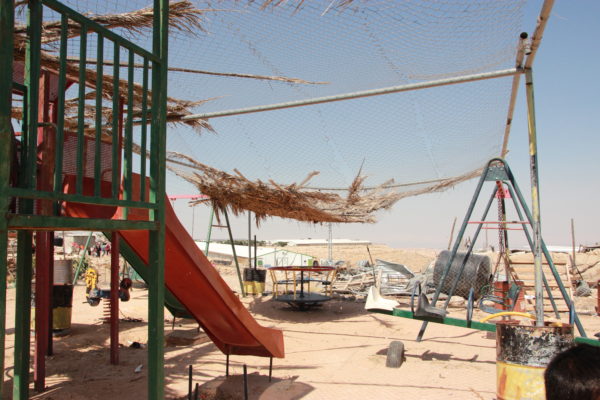
Umm al-Kheir playground
But, Bedouins are strong people and, so, the people of Umm al Kheir remain to their land, raise their children, find love and happiness. A solar panel installation was installed to ensure at least the basic electrical needs. This plant was build on the only house in Umm al Kheir, which is, according to the Israeli administration, not ‘illegal’ and thus not under threat of demolition.
The inhabitants, left without shelter after a demolition, rebuild their houses after a demolition. There is a community centre, a playground and even a library in this tiny village. Everything is built without permission and has been demolished several times, but the will to fight for the land and their existence is bigger than the bulldozers.
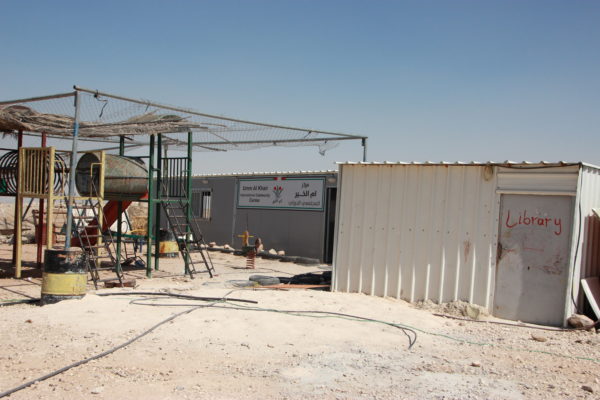
Umm al-Kheir library and community-center
We met unbelievably warmhearted people, made new friends and had a delicious Iftar, made by the local women. Because of the Bedouin hospitality, we felt directly at home and enjoyed strolling around between the sheep and discovering which plants are growing in the garden.
But, as mentioned before, Umm al Kheir is threatened by house demolitions, as every house has an outstanding demolition order. The army keeps coming to the village, taking pictures of the shelters. Also, camera drones, controlled by settlers, are appearing regularly to record any possible changes. Umm al Kheir fears demolition after the end of Ramadan and has requested protective presence in the village. We already spent a night there with a team, as are other groups such as Christian Peacemaker Teams (CPT).
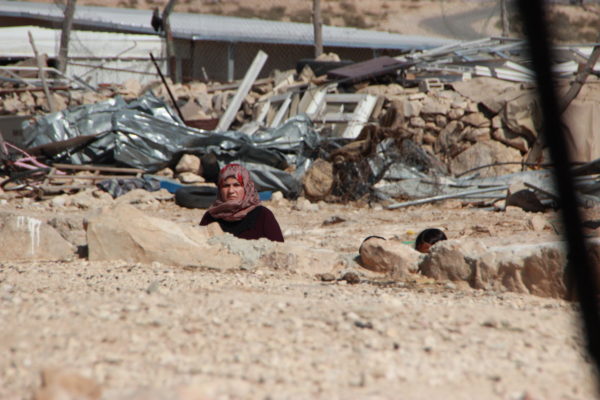
Rubble from a recent demolition by Israeli forces
This is not just about a few houses, this is about homes and the existence and Umm al Kheir, which shares its fate with so many small villages around the whole occupied West bank, which suffers under the Israeli occupation.

